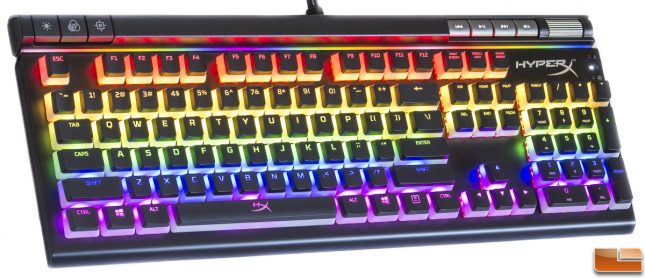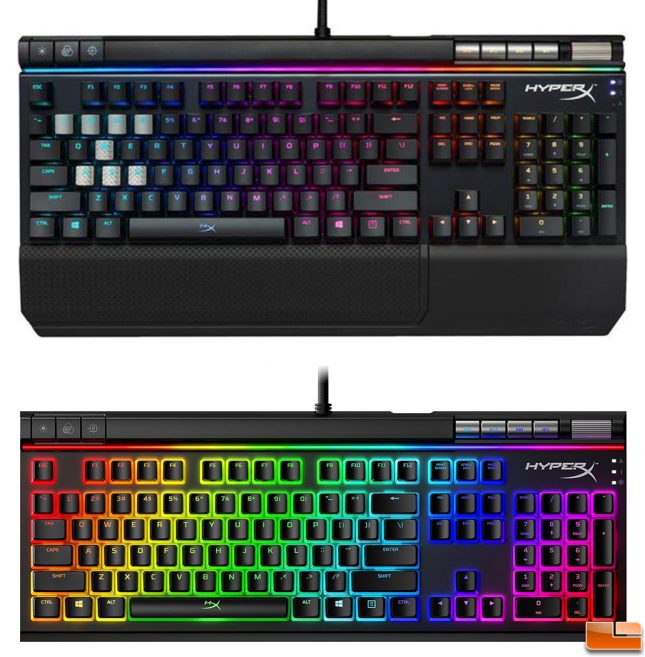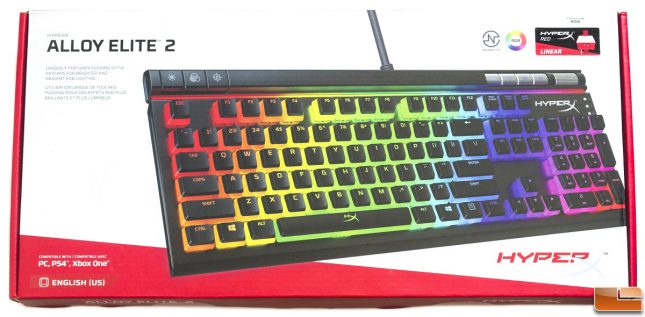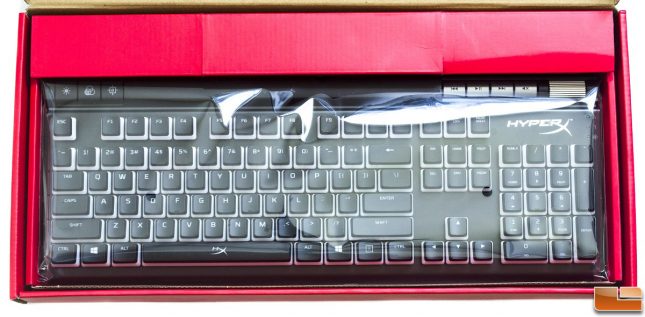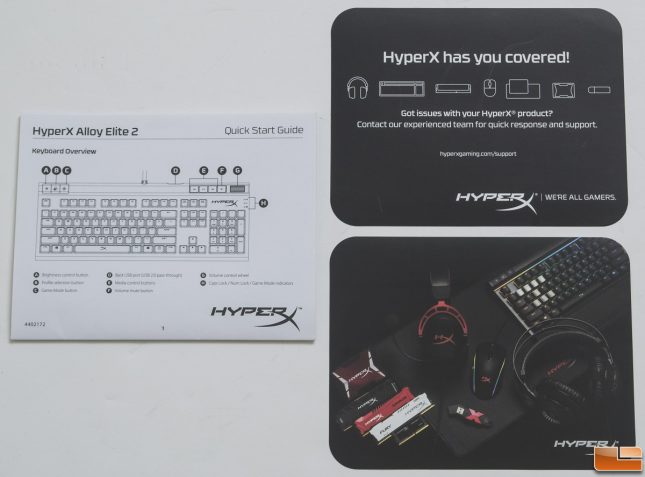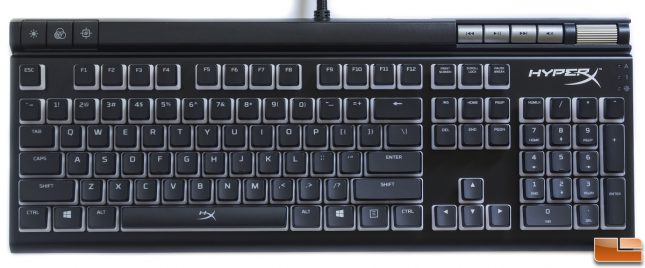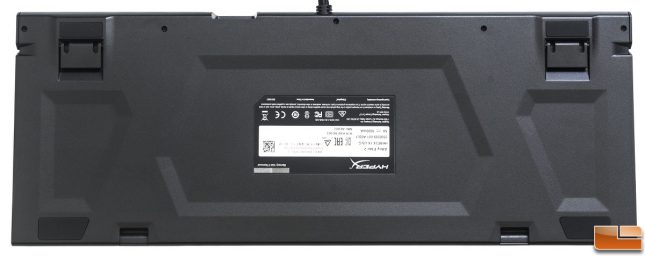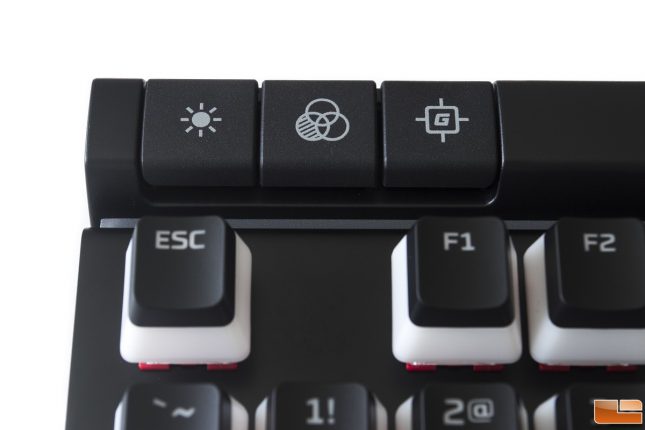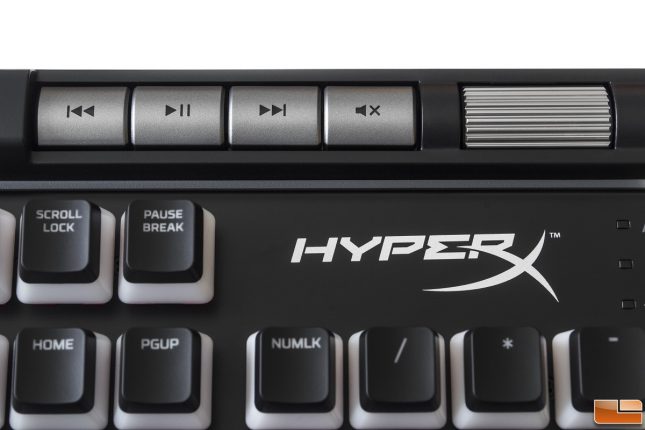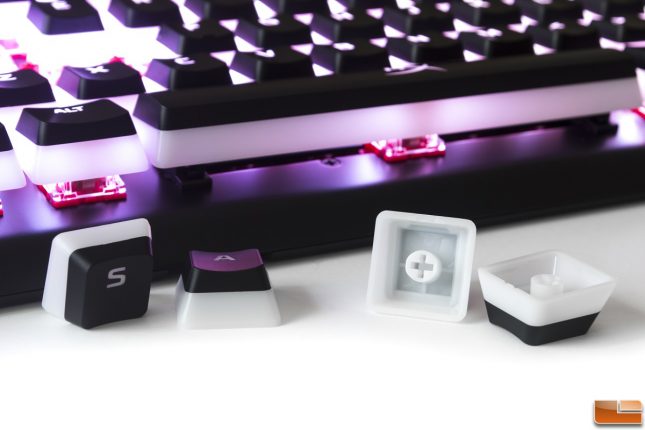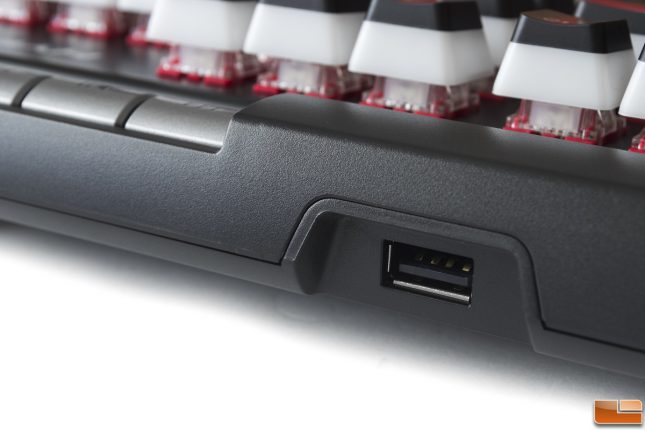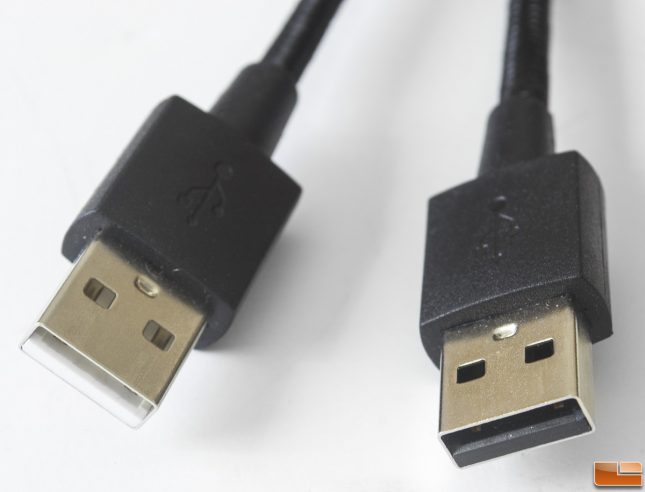HyperX Alloy Elite 2 Gaming Keyboard Review
HyperX Alloy Elite 2 Gets Pudding Keycaps & Homegrown Switches
HyperX, the high-performance product division of Kingston Technology, released their Alloy Elite RGB gaming keyboard some two years ago at the time of this review. It came with genuine Cherry MX switches and the ability to customize settings via the HyperX NGenuity software. Improving on the Alloy Elite RGB is the Alloy Elite 2, which comes with homegrown HyperX Red linear mechanical switches and translucent Hyperx Pudding ABS keycaps.
The HyperX Red linear mechanical switches have a keystroke cycle of 80 million clicks; significantly more than the 50 million on a standard Cherry MX switch. These switches have an operating force of 45 grams and an actuation point of 1.8 mm. An LED is exposed from each switch to allow for brighter light output. Paired with the Pudding keycaps,
HyperX designed the Pudding keycaps to allows more light to spread across the surface of the keyboard. This greatly improves the overall looks and light output. The keycaps also include the HyperX signature font, which is bolder and wider than the font on the previous Pudding keycaps. And of course, the Alloy Elite 2 still includes the dedicated media control keys and software support via HyperX NGenuity.
With an MSRP of $129.99, the Alloy Elite 2 looks like a good keyboard considering the long-lasting key switches along with its bright RGB illumination. Let’s take a look at the specifications and see what else this keyboard has to offer.
| HyperX Alloy Elite 2 Specifications | |
| Switch | HyperX Switch |
| Type | Mechanical |
| Backlight | RGB (16,777,216 colors) |
| Light effects | Per key RGB lighting and 5 brightness levels/td> |
| Onboard memory | 3 profiles |
| USB 2.0 Pass-through | Yes |
| Anti-ghosting | 100% anti-ghosting |
| Key Rollover | N-key mode |
| LED Indicator | Yes |
| Media control | Yes |
| Game Mode | Yes |
| OS compatibility | Windows 10, 8.1, 8, 7 |
| Dimensions | 444.0 mm x 174.0 mm x 37.4 mm |
| Weight (Keyboard and cable) | 1530 g |
| Cable Type | Attached, Braided |
| Cable Length | 1.8 m |
| Switch | HyperX Red |
| Operation Style | Linear |
| Operating Force | 45 g |
| Actuation Point | 1.8 mm |
| Total Travel Distance | 3.8 mm |
| Life Span (Keystrokes) | 80 million |
There is a huge difference in terms of lighting when comparing the HyperX Alloy Elite RGB against the Alloy Elite 2. The keyboard at the top of the image is the Alloy Elite RGB, while the one on the bottom is the Alloy Elite 2. With the Alloy Elite RGB, most of the light only comes through the key fonts. But if we take a look at the Alloy Elite 2, the Pudding keycaps really affect the overall looks of the keyboard. This is because the translucent and dual-layer design on the keycaps are designed to provide extra brilliance for better light distribution.
The HyperX Alloy Elite 2 comes in a standard box with an illustration of the product. Its features and specification are listed around the box. There is also a sticker at the top right indicating this keyboard comes with the HyperX Red switches.
With the box opened, we can see the keyboard is nicely packaged in a plastic bag. There is enough cardboard padding on the sides of the keyboard to protect it from damage during shipping.
In terms of accessories, we get the multilingual quick start guide, a support card, and a welcome card from the HyperXFamily. Unlike its predecessor, the Alloy Elite 2 does not come with additional titanium-colored textured keycaps, the HyperX key cap removal tool, and wrist rest.
The Alloy Elite 2 has a standard keyboard layout on top of a steel frame. There are additional lighting and media controls towards the top of the keyboard. We can also notice how the HyperX Pudding keycaps affect the overall look of the keyboard. The idea of these Pudding keycaps is to give RGB lighting extra brightness compared to solid-color keycaps.
On the bottom of the keyboard, there are four rubberized feet on all four sides to prevent the keyboard from sliding around. This is the same design seen on the Alloy Elite RGB. Of course, the wrist rest mounts are still present, but the Alloy Elite 2 does not come with one.
At the top left of the keyboard, there are three buttons for toggling between LED brightness, profiles, and Game Mode. There are five brightness levels and three hardware profiles. By default, Game Mode disables the Windows key, but there are more options in the HyperX NGenuity software to customize it.
There are three media control buttons for music or video playback with the fourth button being the volume mute button. These four buttons are RGB capable and customizable through the software. Towards the right, there is a large volume scroll wheel for volume adjustments.
The Alloy Elite 2 comes with the HyperX Pudding keycaps, which can be purchased separately for $24.99 shipped on Amazon. These leycaps are also resistant to wear, friction, and solvents. We can notice half of the keycap is made from translucent ABS, which allows more light distribution across the keyboard surface. The top is made of an opaque black ABS material with translucent signature HyperX font.
On the back side of the keyboard is a USB 2.0 pass-through port. This is great for something like a mouse, headset, or a wireless receiver. Because it is only USB 2.0, we cannot expect the fastest speeds in terms of data transfer.
In terms of connectivity, the Alloy Elite 2 connects to a computer via two USB 2.0 ports (one for data, one for USB pass-through).
Let’s take a look at the HyperX NGenuity software in the next section.

